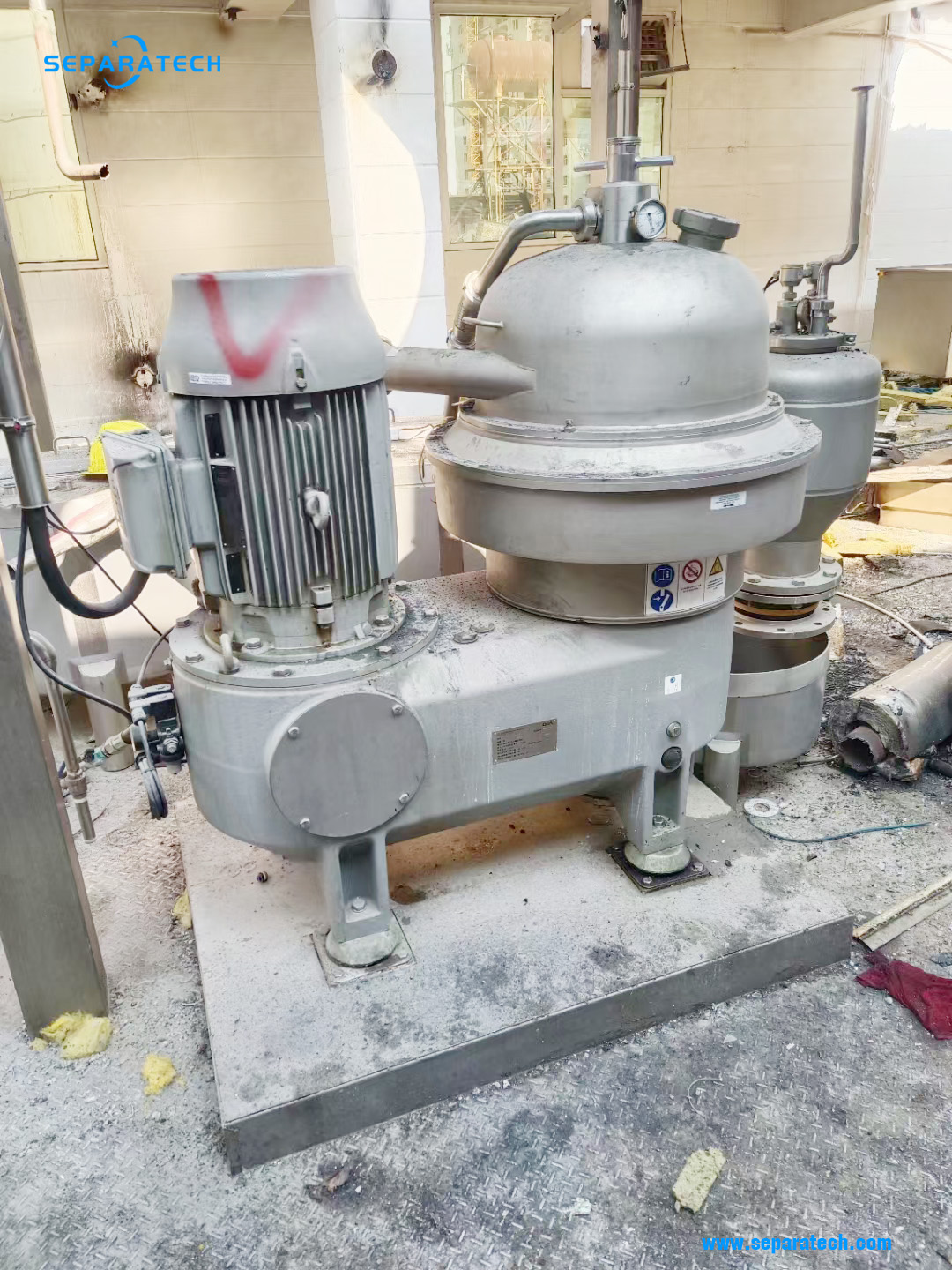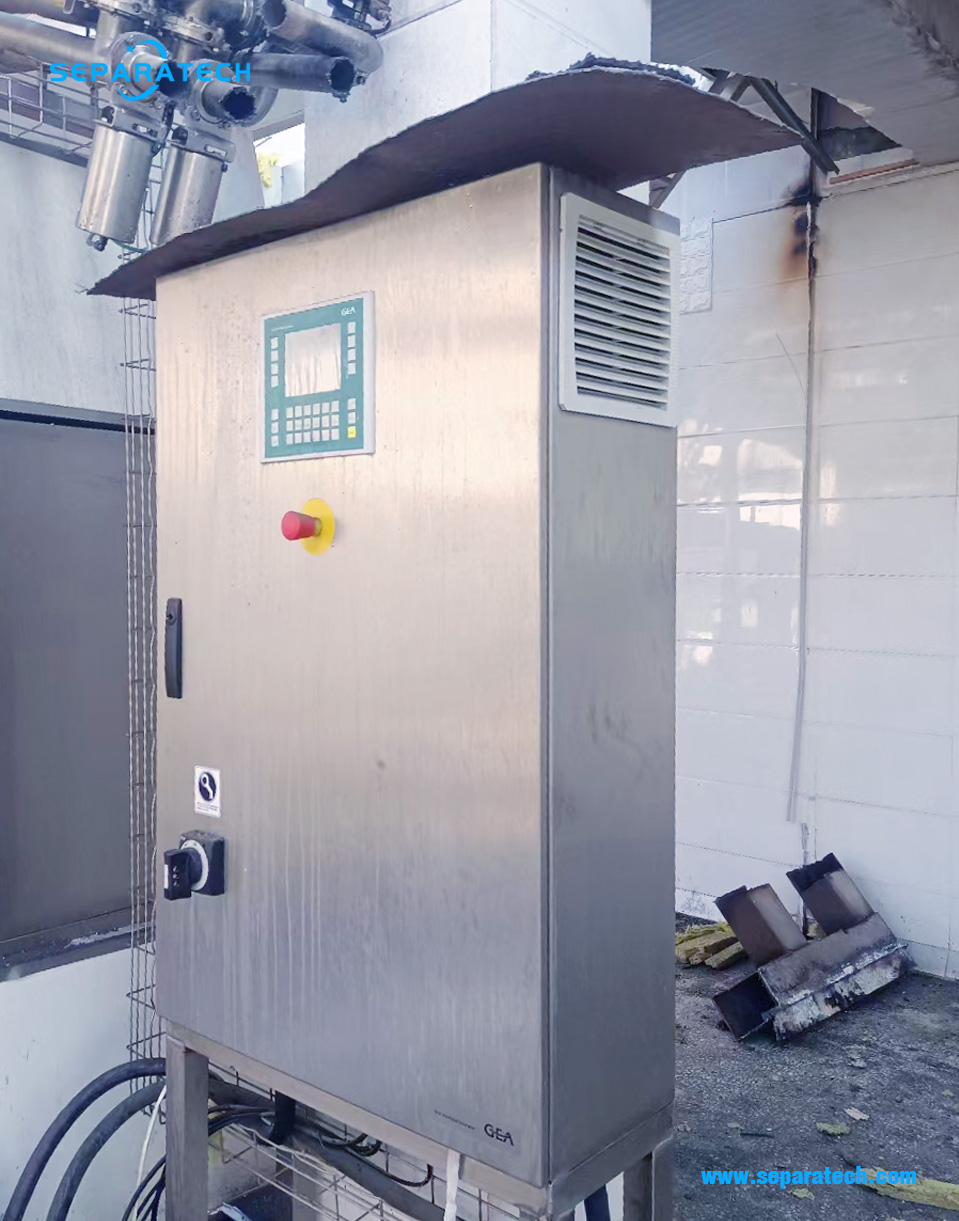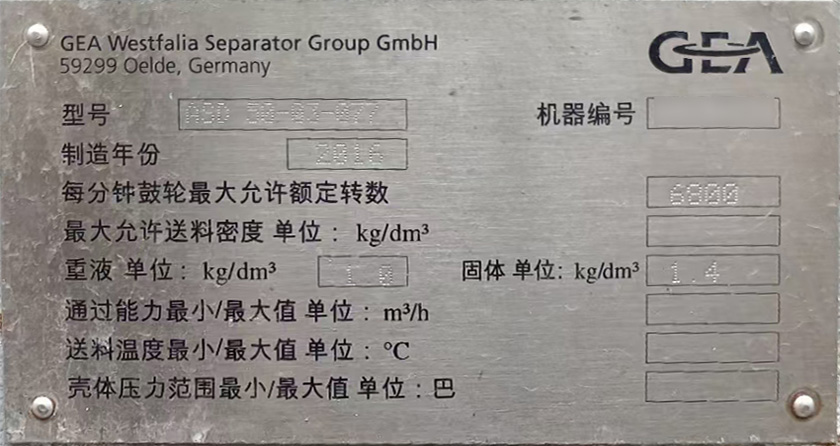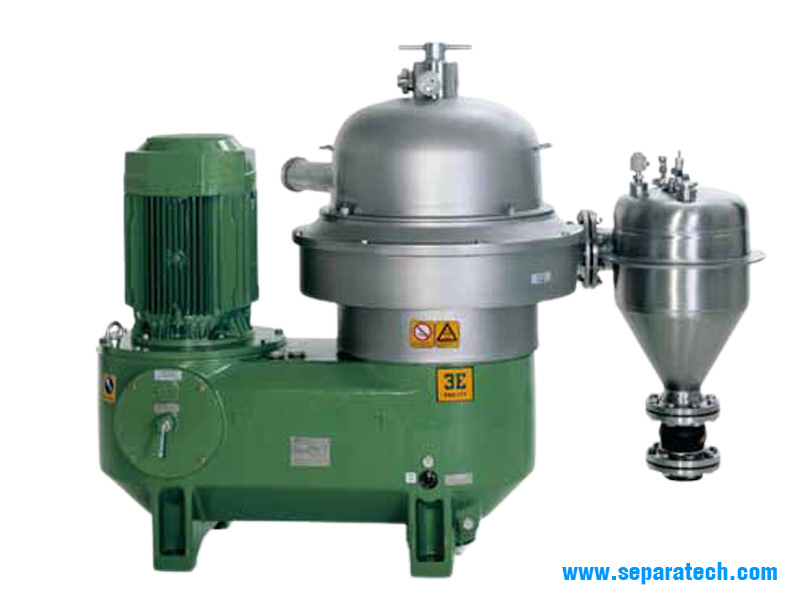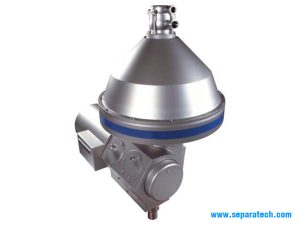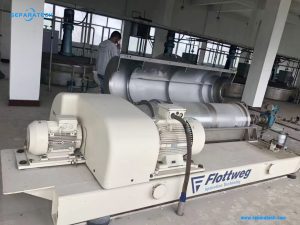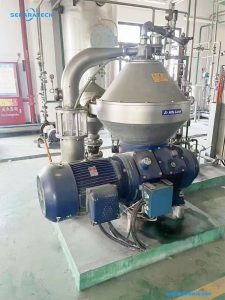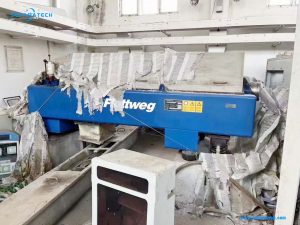Technical Data
Designation: ASD50-03-077
Manufacturer: GEA Westfalia
Bowl speed: 6800 rpm
Bowl volume: 21 L
Motor: 22 Kw
Year: 2016
Applications of ASD50-03-077 disc centrifuge
ASD50-03-077 disc centrifuge is designed for processing fish and animal by-products.
Working principle
The product is fed into the bowl through a closed-line system. The heavy liquid phase is discharged foam-free under pressure by a centripetal pump. The light liquid phase is discharged into the hood. The separated solids are collected in the solids holding space and are ejected through ports.
Self-cleaning separators operate continuously without interruption. Solids ejection is initiated by the separator control system.
Bowl ejections can be carried out on a time-dependent or solids-dependent basis.
These machines are used for the separation of immiscible liquid mixtures with different densities, with simultaneous removal of the solids.
The separators are equipped with a disc-type bowl and inner movable sliding piston. The two liquid phases are separated in the disk stack. The light liquid phase (fish oil) flows towards the centre of the bowl, and the heavy liquid phase (stickwater) flows towards the periphery of the bowl. The solids are forced into the solids holding space.
In order to achieve an optimum separation effect, the separation zone between the two liquid phases should pass through the so-called rising channels. Once the optimum moment for ejections is reached, the piston is hydraulically operated. The solids are ejected instantaneously at full bowl speed and the sliding piston closes the solids ejection ports. The hydraulically actuated sliding piston permit both partial and total ejections. In the case of partial ejections, only the required amount of solids is ejected while the liquid remains in the bowl.
During total ejection, the whole contents of the bowl are ejected. A total ejection is carried out after several partial ejections, depending on the consistency of the solids, or for cleaning the bowl. The sliding piston is forced down as far as it will go to form the largest possible ejection gap.
The larger self-cleaning separators are equipped with a special bowl hydraulic system which ensures that a constant preset volume of solids is always discharged during partial ejections (controlled partial ejections) which is not affected by pressure fluctuations in the operating water feed.
In the separators used for industrial fish processing, the heavy liquid phase (stickwater) is generally discharged foam-free and under pressure by means of a centripetal pump.
The light liquid phase (fish oil) is normally discharged under gravity into the hood. The discharge of the light liquid phase is equipped with a U-bend and a sight glass as the fish oil tends to oxidise. In the case of fish presswater and concentrate (solubles) deoiling, a throttle is fitted in the heavy phase discharge line (stickwater discharge), which enables complete displacement of the oil out of the bowl prior to each ejection without the addition of water or stickwater.
The separation zone can be shifted towards the centre or towards the periphery of the bowl by varying the regulating ring diameter below the stickwater centripetal pump or the back pressure. This guarantees an optimum separation effect.
